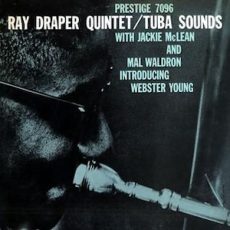
Daily Dose Of Jazz…
Raymond Allen Draper was born on August 3, 1940 in New York City. He attended the Manhattan School of Music in the mid-1950s. As a leader, he recorded his debut album, Tuba Sounds in 1957 for Prestige Records at the age of 16, with a quintet. His sophomore album, The Ray Draper Quintet featuring John Coltrane, was recorded at the age of 17 with slight changes in his quintet, including John Coltrane.
His drug use got him imprisoned, however, after his release in the late 1960s, Draper formed the first jazz rock fusion band composed of established jazz musicians of the day. This preceded Miles Davis’s Bitches Brew, which is normally recognized as the first jazz rock fusion group and recording by two years.
Original band members included George Bohanon on trombone, Hadley Caliman on tenor sax, John Duke on upright bass, Paul Lagos on drums and Tom Trujillo on guitar. This band, after its first live performance at Hollywood’s Whisky a Go Go and was offered numerous record deals and booked solid at rock venues for the rest of the year. Lagos went on to tour with John Mayall and was one of the founders of the group Pure Food & Drug Act, featuring Don ‘Sugarcane’ Harris.
He began using heroin again and the more experienced band members quit, except for the youngest member, guitarist Tom Trujillo and his landlord, Chuck Gooden. He hired San Diego trumpeter Don Sleet and saxophonist Ernie Watts. Eventually Draper brought drummer Paul Lagos back, along with saxophonist Richard Aplanalp, trumpeter Phil Wood, and bassist Ron Johnson, becoming a new group named Red Beans and Rice.
They recorded the album Red Beans and Rice Featuring Sparerib Ray Draper on Epic Records. They disbanded, he got hooked on drugs again, and left California for a couple of years in London, England. He was seen sporadically performing and recording. Returning to New York City in the hopes of becoming clean, he remarried and had two children, and continued to compose for other musicians.
He went on to play for a time with Max Roach, and in 1982 he joined the Lionel Hampton Orchestra. Tha year, coming out of a bank in Harlem, he was held up by a gang of juveniles. The 13-year-old leader of the gang shot him, after he had given him his money.
Tuba player Ray Draper, who had been clean of drug use and was working on a composition found in his attaché case, died on November 1, 1982.
More Posts: bandleader,history,instrumental,jazz,music,tuba
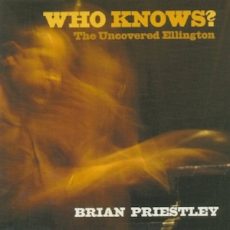
Daily Dose Of Jazz…
Brian Priestley was born on July 10, 1940 in Manchester, England and began studying music at the age of eight. In the 1960s he gained a degree in modern languages from Leeds University, while playing in student bands. In the mid-1960s, he began contributing to the jazz press and was responsible for entries in Jazz on Record: A Critical Guide to the First Fifty Years, 1917–1967.
In 1969 he moved to London, England and began playing piano with bands led by Tony Faulkner and Alan Cohen. Priestley helped transcribe Duke Ellington’s Black, Brown and Beige, and Creole Rhapsody for Cohen. He formed his own Special Septet featuring Digby Fairweather and Don Rendell. His compositions include Blooz For Dook, The Whole Thing and Jamming With Jools, based on a live broadcast with Jools Holland.
As a broadcaster he worked on the BBC, London Jazz FM, and for BBC Radio London, and influenced the renewed interest in jazz in the 1980s. Priestley taught jazz piano at Goldsmiths College from 1977 until 1993, and has taught jazz history for various other universities and conservatoires over the years.
Priestley has also written biographies of Charles Mingus, John Coltrane and Charlie Parker, as well as the book Jazz on Record: A History. He co-authored The Rough Guide to Jazz, as well as contributing to several other reference books, and has compiled and/or annotated more than a hundred reissue compilations.
Writer, pianist and arranger Brian Priestley has lived in Tralee, Ireland since 2006 where he continues playing the piano and presents a show on Radio Kerry.
More Posts: arranger,bandleader,educator,history,instrumental,jazz,music,piano,writer
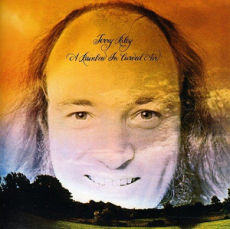
Daily Dose Of Jazz…
Terrence Mitchell Riley was born in Colfax, California on June 24, 1935 and grew up in Redding, California. In the 1950s, he began performing as a solo pianist and studied composition at San Francisco State University, the San Francisco Conservatory, and the University of California Berkeley, studying with Seymour Shifrin and Robert Erickson.
Befriending minimalist omposer La Monte Young, together they performed Riley’s improvisatory composition Concert for Two Pianists and Tape Recorders in 1959–60. Riley later became involved in the experimental San Francisco Tape Music Center, working with Morton Subotnick, Steve Reich, Pauline Oliveros, and Ramon Sender. Throughout the 1960s, he also traveled frequently in Europe, taking in musical influences and supporting himself by playing in piano bars. He also performed briefly with the Theatre of Eternal Music in New York in 1965-1966.
His most influential teacher was Pandit Pran Nath, a master of Indian classical voice who also taught La Monte Young, Marian Zazeela, and Michael Harrison. Riley made numerous trips to India over the course of their association to study and accompany him on tabla, tambura, and voice. In 1971 he joined the Mills College faculty to teach Indian classical music. Riley also cites John Cage and “the really great chamber music groups of John Coltrane and Miles Davis, Charles Mingus, Bill Evans, and Gil Evans as influences on his work.
His long-lasting association with the Kronos Quartet began around 1980 and throughout his career Terry composed 13 string quartets for the ensemble. in addition
Organist, pianist, saxophonist and tamburist Terry Riley, who teaches both as an Indian raga vocalist and as a solo pianist, continues to perform live.
More Posts: bandleader,history,instrumental,jazz,keyboard,music,organ,piano,saxophone,tambura
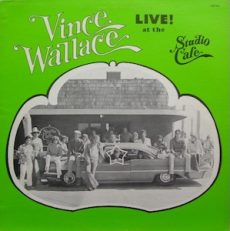
Daily Dose Of Jazz…
Vince Wallace was born on June 15, 1939 in Port Townsend, Washington. At just two months shy of his second birthday his mother moved him to San Joaquin Valley, California. After spending a little time there, they ended up settling and growing up in the Bay area of Oakland, California.
His earliest recordings were on the Black Jack Wayne label in 1953 with Screamin Mel Dorsey and Chuck Wayne and the Heartbeats. These sessions were along with his original instrumental, Funky. He performed regularly at this time at the Country and Western halls and go go bars of Niles, California alongside Rose Maddox, Johnny Cash, and the Black Brothers.
As he developed, he became more sought after at all hours jazz joints where he sat in with Eric Dolphy, Paul Chambers, Charles Mingus, Pony Poindexter, Art Blakey and Smiley Winters. Jimbo’s Bop City in San Francisco was the best place around, where every night after 2 a.m. another legend of the jazz would come through the door.
In 1958 Vince moved to Southern California where he picked up work with Paul Bley and Marvin Rainwater. His Sunday jam session at The Cascades Club in Belmont Shores, helped the emergence of Kent Glenn, Mark Proctor, Gene Stone, and Warren Gale. By 1966 was back in the Bay Area working with alto saxophonist Norman Williams at the JukeBox in San Francisco. Through 1970 Wallace recorded three albums with Little John, a fusion rock band on Epic records.
Drawn back to southern California he experienced some of his widest recognition as his featured performances were reviewed favorably by Gerald Wilson.. This led to an eventual run at the Studio Cafe, and the release of two of Vince’s solo albums on Amp Records. Returning to San Francisco he led a Sunday night jam session through the Nineties, receiving the San Francisco Bay Guardian Award for Best Jam Session in 1995.
With a surge of interest in his music in the new millenium, he started working at the Bulldog Coffee Shop in Oakland and reuniting with Bishop Norman Williams, Prince Lasha, Jim Grantham, Steve Heckman, Fred Randolph, Chuck Thomposon, Chris Amberger, Terry Rodriguez, and John Gilmore, just to name a few. He began working on his memoirs, created a website, took a Friday residency at Cafe Van Kleef, appeared on KCSM 91.1 FM, and recorded a new album with Larry Vuckovich.
Tenor saxophonist Vince Wallace has reestablished himself as one of the most sought after saxophonists around and his music will undoubtably be spread throughout the world via his website www.vincewallace.com.
More Posts: bandleader,history,instrumental,jazz,music,saxophone
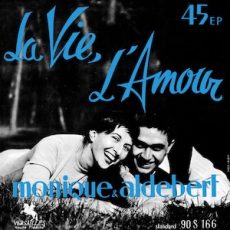
Daily Dose Of Jazz…
Louis Aldebert was born on June 8, 1931 in Ismailia, Egypt. He studied both singing and piano after his family moved to Paris, France and became efficient enough on the latter instrument to gig with tenor saxophonist Don Byas in the mid-1950s. Several years later he played with violinist Stephane Grappelli of Hot Club fame.
Having a career as a singer, he worked with the Blue Stars in the mid-’50s. From 1959-1965 he was a member of the Double Six, a kind of experiment in overcrowding via scat singing. Needless to say, this attracted the attention of Jon Hendricks who made use of Aldebert on a 1965 session.
He married singer Monica Dozo, and after feeling a bias as Byas bandmates, she changed her name to Monique Aldebert-Guerrin. She was part of the rotating Double Six recording cast when some members needed to recover from nagging earaches.
Leaving the Double Six, Byas’ group and the French jazz scene in 1967, the couple moved to America. They initially settled in Las Vegas, Nevada before heading West to Los Angeles, California. They had their own group and did freelance studio vocal work in various capacities, one highlight being a feature on a 1979 side by the Crusaders.
Vocalist, pianist and composer Louis Aldebert, who with his wife collaborated as composers of original songs as well as vocal arrangements of various jazz standards, died on October 10, 2014 in Los Angeles.
More Posts: composer,history,instrumental,jazz,music,piano,vocal




